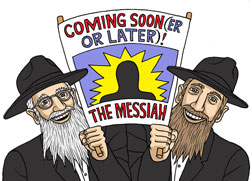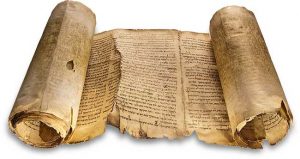
I am copying here a post I just submitted on another forum, so with apologies to readers who have already seen this . . . .
This topic is not about “Jewish prophecies of the messiah’s arrival”. It is not about the second century Bar Kochba rebellion. Nor is it even about popular beliefs and attitudes at the time of the 66-73 CE Jewish war.
It is about the historical evidence we have or don’t have (that is the question) for:
- widespread/popular expectations
- of the appearance of a messiah figure to liberate Judea from Rome
- in the early years of the first century, let’s say up to around year 30 CE
I often read and hear scholars and lay people alike saying that Palestine or the Jews generally were strongly anticipating a messianic figure to appear around the time when, lo and behold, Jesus happened to appear. This is so often said in a way that assumes it is a well-known and indisputable fact of history. But some years ago when I started looking for the evidence supporting this claim (I fully expected to find plenty) I found the task was not so easy. What was cited as evidence so often appeared to me to be vague, imprecise, ambiguous at best and very often simply not relevant — not the sort of data that historians usually like to use as foundations for hypotheses.
I have since been reassured that I was not crazy or blind by discovering several reputable scholars who do say as much: that there is scant to no evidence for
- widespread/popular expectations
- of the appearance of a messiah figure to liberate Judea from Rome
- in the early years of the first century, let’s say up to around year 30 CE
I recently set out details of this [absence of] evidence in a series of blog posts responding to Richard Carrier’s arguments and supporting citations attempting to establish a popular messianic “movement” in early first century Palestine.
The details are covered in that series of posts but I will outline them here:
The Dead Sea Scrolls
 Yes, there are messianic references found in some of these. But they are in fact very few compared with the total number of scrolls and surviving manuscript fragments. This relative “fewness” does not lead us to think that messianism was a particularly major preoccupation of the sectarians producing or using those scrolls (assuming “sectarians” of some sort were responsible for them).
Yes, there are messianic references found in some of these. But they are in fact very few compared with the total number of scrolls and surviving manuscript fragments. This relative “fewness” does not lead us to think that messianism was a particularly major preoccupation of the sectarians producing or using those scrolls (assuming “sectarians” of some sort were responsible for them).
Moreover, the messianic references that do exist do not, if I recall correctly, give any indication that a messiah was to appear “within a few years/generation” around the early first century (or any specific period). One could write of a doctrinal belief in a messianic future without being hung up about it and getting everyone around enthused to expect it to happen “any day now”.
Besides, one has to ask the extent to which the contents of the DSS throw a light on the beliefs and attitudes of the more general illiterate population.
Other Second Temple writings
The main criticisms — especially relative fewness of the references, and their generalised (nonspecific) character — raised re the DSS also apply here.
Often these writings speak of God himself directly acting in some future day of judgment. We are so accustomed to think of God doing this through a messiah that we sometimes read a messianic figure into these passages. But like the OT books, most prophecies about the “last days” do speak of God directly acting in the world and make no mention of a messianic intermediary.
Besides, is it not a giant leap to impute to the illiterate population at large certain emotional or psychological attitudes towards passages in these texts that attract our attention?
Were not those who read, studied and discussed such texts just a tiny fraction of a percent of a tiny fraction of a percent of the entire population?
The OT books
Much the same criticisms as above apply here, too. Continue reading “Myth of popular messianic expectations at the time of Jesus”
